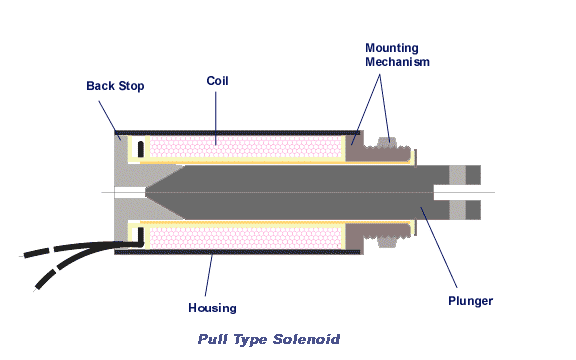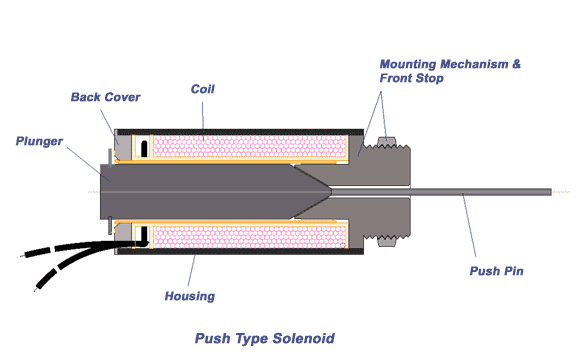A solenoid is a long wire, wound with a helical pattern, usually surrounded by a steel frame, having a steel core inside the winding.
When carrying a current "i ", the solenoid becomes an electro-mechanical device, in which electrical energy is converted into mechanical work.

|

|
The core of a solenoid is usually made of two sections, a movable actuator, or plunger, and a fixed end core or back stop.
The efficiency of a solenoid is a factor of mechanical geometry, electrical configuration and magnetic permeability of core, plunger and housing.
The plunger is free to travel in the center of winding in a linear direction. When the coil is energized by the electric current "i ", a magnetic force is created between plunger and end core, causing the plunger to travel. The higher the permeability of steel used, the better the performance.
It is essential for a solenoid to lose its magnetic force when input electrical power is removed. This is to allow the plunger to resume its original position. Any remaining magnetic field is called residual magnetism.
Material of the central guide and plating of plunger must be chosen to introduce minimum friction and low wear. Glass filled nylon and brass for the guide and electro-less nickel plating or other low friction coatings such as PTFE for the plunger are often good candidates.
Design and selection of a solenoid requires basic knowledge of mechanical and electrical interrelationships. In many cases it is essential to make tradeoffs among a variety of mechanical, electrical, thermal,
acoustical, and physical properties.
This design guide has been arranged to assist you in making the proper solenoid selection. However, if you prefer to have us design or recommend a solenoid based on your specific requirements, feel welcome to contact us.
|

